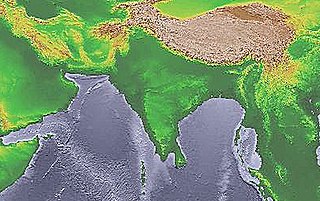
Marine Archeology in the Gulf of Khambhat - earlier known as Gulf of Cambay - centers around controversial findings made in December 2000 by the National Institute of Ocean Technology (NIOT) under the Gulf of Khambhat, a bay on the Arabian Sea on the west coast of India. The structures and artifacts discovered by NIOT are the subject of contention. The major disputes surrounding the Gulf of Khambhat Cultural Complex (GKCC) are claims about the existence of submerged city-like structures, the difficulty associating dated artifacts with the site itself, and disputes about whether stone artifacts recovered at the site are actually geofacts or artifacts. One major complaint is that artifacts at the site were recovered by dredging, instead of being recovered during a controlled archeological excavation. This leads archeologists to claim that these artifacts cannot be definitively tied to the site. Because of this problem, prominent archeologists reject a piece of wood that was recovered by dredging and dated to 7500 BC as having any significance in dating the site. The surveys were followed up in the following years and two palaeo channels of old rivers were discovered in the middle of the Khambhat area under 20–40 m (66–131 ft) water depths, at a distance of about 20 km (12 mi) from the present day coast.

An out-of-place artifact is an artifact of historical, archaeological, or paleontological interest found in an unusual context, which challenges conventional historical chronology by its presence in that context. Such artifacts may appear too advanced for the technology known to have existed at the time, or may suggest human presence at a time before humans are known to have existed. Other examples may suggest contact between different cultures that is hard to account for with conventional historical understanding.
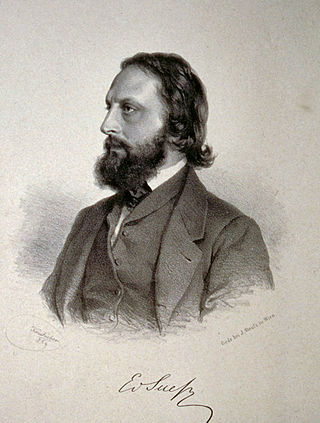
Eduard Suess was an Austrian geologist and an expert on the geography of the Alps. He is responsible for hypothesising two major former geographical features, the supercontinent Gondwana and the Tethys Ocean.

An induction coil or "spark coil" is a type of electrical transformer used to produce high-voltage pulses from a low-voltage direct current (DC) supply. To create the flux changes necessary to induce voltage in the secondary coil, the direct current in the primary coil is repeatedly interrupted by a vibrating mechanical contact called an interrupter. Invented in 1836 by the Irish-Catholic priest Nicholas Callan, with additional research by Charles Grafton Page and others, the induction coil was the first type of transformer. It was widely used in x-ray machines, spark-gap radio transmitters, arc lighting and quack medical electrotherapy devices from the 1880s to the 1920s. Today its only common use is as the ignition coils in internal combustion engines and in physics education to demonstrate induction.
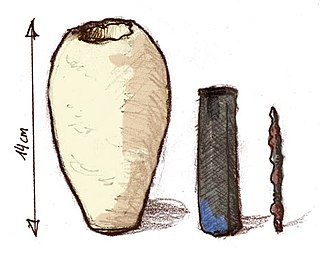
The Baghdad Battery is the name given to a set of three artifacts which were found together: a ceramic pot, a tube of copper, and a rod of iron. It was discovered in present-day Khujut Rabu, Iraq in 1936, close to the metropolis of Ctesiphon, the capital of the Parthian and Sasanian empires, and it is believed to date from either of these periods. Similar artifacts have been found at nearby sites.

Ancient astronauts refer to a pseudoscientific set of beliefs which holds that intelligent extraterrestrial beings visited Earth and made contact with humans in antiquity and prehistoric times. Proponents suggest that this contact influenced the development of modern cultures, technologies, religions, and human biology. A common position is that deities from most, if not all, religions are extraterrestrial in origin, and that advanced technologies brought to Earth by ancient astronauts were interpreted as evidence of divine status by early humans.

A geode is a geological secondary formation within sedimentary and volcanic rocks. Geodes are hollow, vaguely spherical rocks, in which masses of mineral matter are secluded. The crystals are formed by the filling of vesicles in volcanic and subvolcanic rocks by minerals deposited from hydrothermal fluids; or by the dissolution of syn-genetic concretions and partial filling by the same or other minerals precipitated from water, groundwater, or hydrothermal fluids.
Carl Edward Baugh is an American young Earth creationist. Baugh has claimed to have discovered human footprints alongside non-avian dinosaur footprints near the Paluxy River in Texas. Baugh promoted creationism as the former host of the Creation in the 21st Century TV program on the Trinity Broadcasting Network.

The Durupınar site is geological formation of 164 metres made of limonite on Mount Tendürek, adjacent to the village of Üzengili in eastern Anatolia or Turkey. The site is 3 km (1.9 mi) north of the Iranian border, 16 km (9.9 mi) southeast of Doğubayazıt in the Ağrı Province, and 29 kilometres south of the Greater Mount Ararat summit, at an elevation of 1,966 to 2,004 m above sea level.
Tinplate consists of sheets of steel coated with a thin layer of tin to impede rusting. Before the advent of cheap milled steel, the backing metal was wrought iron. While once more widely used, the primary use of tinplate now is the manufacture of tin cans.

The Bosnian pyramid claims are pseudoarchaeological theories put forward to explain the formation of a cluster of natural hills in the area of Visoko in central Bosnia and Herzegovina. Since 2005, Semir Osmanagić, a Bosnian-American businessman based in Houston, Texas, has claimed that these hills are the largest human-made ancient pyramids on Earth. His claims have been overwhelmingly refuted by scientists but he has proceeded to promote the area as a tourist attraction.
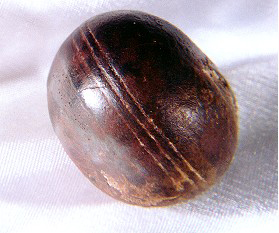
Klerksdorp spheres are small objects, often spherical to disc-shaped, that have been collected by miners and rockhounds from 3-billion-year-old pyrophyllite deposits mined by Wonderstone Ltd., near Ottosdal, South Africa. They have been cited by pseudoscientists and reporters in books, popular articles, and many web pages as inexplicable out-of-place artifacts that could only have been manufactured by intelligent beings. Geologists who have studied these objects have concluded that the objects are not manufactured, but are rather the result of natural processes.
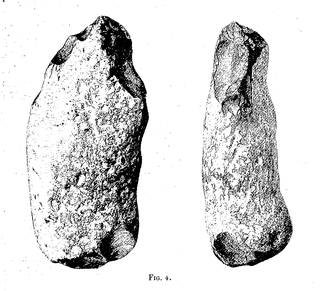
A geofact is a natural stone formation that is difficult to distinguish from a man-made artifact. Geofacts could be fluvially reworked and be misinterpreted as an artifact, especially when compared to paleolithic artifacts.
Throughout history there have been several mummy forgeries.
Champion is an American brand of spark plug.
Gillian Rose Foulger is a British geologist and academic born in 1952 in Ipswich. Foulger plays a major role in coordinating the global debate in the category of Earth Science, on whether or not deep mantle thermal plumes exist and create “hot spot” volcanism.

The London Hammer is a name given to a hammer made of iron and wood that was found in London, Texas in 1936. Part of the hammer is embedded in a limey rock concretion, leading to it being regarded by some as an anomalous artifact. The man-made tool is much younger than the Lower Cretaceous rock surrounding it.

The conservation and restoration of shipwreck artifacts is the process of caring for cultural heritage that has been part of a shipwreck. Oftentimes these cultural artifacts have been underwater for a great length of time. Without conservation, most artifacts would perish and important historical data would be lost. In archaeological terms, it is usually the responsibility of an archaeologist and conservator to ensure that material recovered from a shipwreck is properly cared for. The conservation phase is often time-consuming and expensive, which is one of the most important considerations when planning and implementing any action involving the recovery of artifacts from a shipwreck.

The iron pillar of Delhi is a structure 7.21 metres high with a 41-centimetre (16 in) diameter that was constructed by Chandragupta II, and now stands in the Qutub complex at Mehrauli in Delhi, India. The metals used in its construction have a rust-resistant composition. The pillar weighs more than six tonnes and is thought to have been erected elsewhere, perhaps outside the Udayagiri Caves, and moved to its present location by Anangpal Tomar in the 11th century.

The conservation-restoration of the H.L. Hunley is currently being undertaken by the Warren Lasch Conservation Center; they hope to have the Hunley project completed by 2020. Since the Hunley was located in 1970 by Dr. E. Lee Spence and recovered from the ocean in 2000, a team of conservators from the Lasch Conservation Center has been working to restore the Hunley.
















